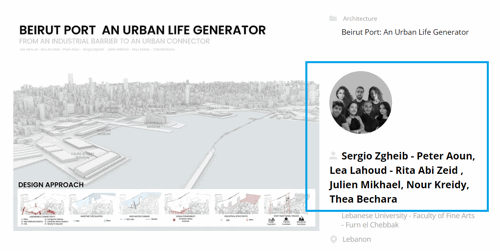Bridging Inequality

Project idea
Karachi is broadly divided into planned and unplanned settlements ( low income settlements). The unplanned settlements face social exclusion, inequality, marginalization and lack of essential service. They are often ignored by the authorities. Because of the lack of essential services the communities often get into fights which turn into turf wars. This is the city where more than 60% of its population is living in informal settlements which lack planned infrastructure, basic necessities and hygienic living conditions. The authorities ignore these settlements and fund unnecessary developmental projects facilitating and protecting the interest of elites,serving only a fraction of the population, fueling the existing divide and disparity between the communities.
The economic and resource distribution imbalance coupled with absence of the provision of basic need has created two unequal and unfair worlds, henceforth if not catered on the ethical and moral ground would lead to gentrification, hostility and increase in crime rate in the society.
Similar tale of disparity can be observed in case Kati pahari, a geographical boundary separating two contrasting world, one side of this boundary is located the North- Nazimabad town a planned settlement of upper middle class with peaceful environment and all urban facilities, on the other side is located Orangi town facing Blatant neglect and injustice being called as the most active ethnic fault line of Karachi lacking urban amenities and services.
Project description
The one primary goal of this project was to understand the effects of geopolitics and conflict on social composition and cohesion of communities living in Kati pahari. Through research it was found out that communities here are living together peacefully, people belonging to different ethnicities helped each other out during the crisis. Some of them have married their daughters outside their ethnicity into other communities reflecting a sense of acceptance and good-will. Some of the civil issues in the neighborhood escalate into communal conflicts by the extremist groups. However the only time the communities had differences was because of lack of resources and infrastructural issues adding up to the daily frustration of the residents. The area faces severe landslide issues, 12 hours of load shedding, water and gas availability crisis and with broken pathways leading to hill top representing poor performance and neglect from authorities.
With a population of 90,000 people living on just 5.36 km.sq Qasba colony has only 20 clinics operated by non professional medical practitioners and 40 educational institutions with 11 of them temporarily closed due to lack of teachers and attendance. People living here belong to the low income bracket and are unable to afford their children's education due to which the literacy rate of this settlement is only 7 percent.
Part of the reason for this is the unavailability of teachers who are reluctant to show up in government schools in fear of the attached stigmas associated with the dark past of Kati pahari, Characterizing this area as unsafe. This fear is also reflected in the construction of Naya Nazimabad flyover which is facilitating private real estate and would provide alternate routes to visitors and residents of Naya- Nazimabad as according to residents the route from Kati- pahari would be unsafe for daily commute, leading to further marginalization and social exclusion of Kati- pahari from rest of Karachi.
With 51.8 percent unbuilt area available, adaptable, flexible, low cost and resilient solutions could be provided on the edge (Kati pahari) dividing the two worlds. Taking advantage of the beautiful mountain range which is also the highest point of Karachi, This recreational intervention would have the capacity to empower locals by providing solutions to their daily problems and at the same time generate income and need for recreational zones. This intervention on the boundary would reduce the prejudice associated with this settlement, preventing its development and initiate social cohesion between the two worlds, here everyone would feel included. Part of this intervention would be privately accessible to only residents of Kati pahari and part of it would be open for all.
In the second phase of the thesis a void called Qasba ground is selected to empower the locals, this ground has skill based , revenue generation and communal programs. The void is located at the heart of Qasba colony and it acts as a common node for all communities. The design solution would empower and uplift communities.
Technical information
The construction of the solution provided is sustainable and quick, made from scaffolding and the walls are made by combining the recyclable corrugated sheets with dry grass as insulating material.







